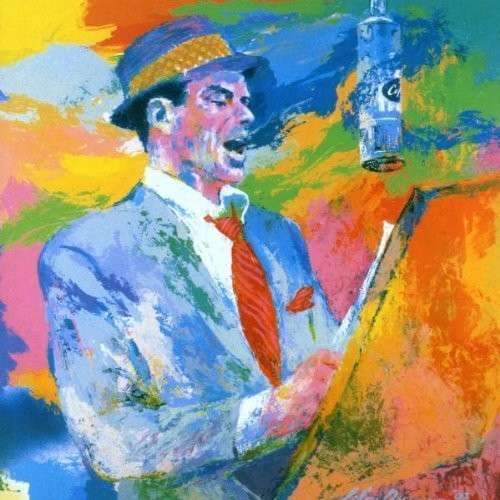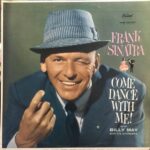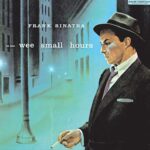
THE LAST YEARS OF FRANK SINATRA
by Mahnuel Munoz
CHAPTER 7
Frank had recorded duets with other singers throughout his career, from his days with Tommy Dorsey’s band through the 1980s. The idea of creating an entire album of Sinatra paired with other vocals had existed since the summer of 1986. At that time, Tina Sinatra, Robert Finkelstein (the Sinatra family lawyer), producer Richard Perry and CBS CEO Walter Yetnikoff put on the table a project to pair Frank with different artists on Columbia’s payroll. Madonna, Bruce Springsteen and Whitney Houston were considered, among others, but the matter was quickly forgotten. Frank concentrated his energies on concerts and did not seem interested in creating new albums, perhaps conditioned by the poor impact of his last LP, “L.A. Is My Lady” (1984).
The definitive “Duets” project began to crystallize around 1992, and several stories circulate about how the flame was lit, but the most plausible is that of producer Phil Ramone, who claims to have proposed to Eliot Weisman, Frank’s manager, a couple of ideas for re-recording Sinatra; the first of them, a live album from the glamorous Rainbow Room in Manhattan with a large string orchestra, a rhythm section and some soloists; The second option, more feasible and attractive for Weisman, was an album of duets. The recording of new songs was ruled out due to the singer’s vision and memory problems. A list would therefore be created with some of the greatest classics of the old blue eyes.
Weisman says that he presented the idea to Charles Koppelman, CEO of EMI-Capitol during a party in New York at the end of 1992. Koppelman immediately saw that this project could be a magnificent investment. In the past he already had spectacular successes uniting the golden throats of the music scene; in 1979 he scored a number one hit with “No More Tears (Enough Is Enough)” by Barbra Streisand and Donna Summer; The following year, bringing together Streisand and Barry Gibb on the LP “Guilty,” he sold five million copies, and in 1981 he topped the charts over Diana Ross and Lionel Richie with “Endless Love.” With these precedents, Koppelman had no problem assuming all the expenses and risks. Phil Ramone was named producer. Ramone had worked with Sinatra in 1967 during the sessions for the album “The World We Knew” and had since built a strong reputation producing Barbra Streisand, Paul McCartney and Bob Dylan. Weisman, Koppelman and Don Rubin took over as executive producer, and Hank Cattaneo, sound director on Frank’s concerts, was named co-producer. The prestigious Al Schmitt was hired as sound engineer, who had sessions with, among many others, Elvis Presley, Neil Young and Michael Jackson, and was eager to work with Sinatra.
Patrick Williams, arranger and composer of more than two hundred film soundtracks, is called upon to conduct the orchestra. Williams worked on the songs with Bill Miller, Sinatra’s pianist, and, although the original arrangements are respected, Williams brings personal touches to some pieces.
Upon learning about the project, Frank is skeptical, because he doesn’t understand the point of re-recording his old songs or why anyone would want to sing them with him. Some of those closest to him comment that he probably fears not measuring up. Frank Sinatra scared? Yes, because, although his style and ability to seduce remain unchanged, his voice has inevitably deteriorated. In a concert, the damage to Sinatra’s instrument is attenuated thanks to the magical mix of emotions that floats in the atmosphere of a venue, the acoustics and the overwhelming sound of the orchestra; Upon leaving the theater, the audience is invaded by a kind of Stendahl syndrome that fixes the evening as perfect in their minds and hearts. But the studio recording will remain as such forever, and the possibility that a work bears witness to its fragility torments the singer.
Weisman, Cattaneo and Ramone convey their confidence to Sinatra and assure that any imperfection can be corrected thanks to technology, and if despite everything the result still does not convince him, it will not be published. To avoid delays due to logistical complications and to avoid the added effort of rehearsing alongside the duetists, it is decided that Frank will record the vocals at his expense, with his partner’s part added later. Sinatra reluctantly agrees, but in the lead-up to the first recording session he will continue to express his doubts and test the team’s patience and nerves.
At the beginning of summer the news of Sinatra’s return to the recording studio begins to spread throughout the music world, creating notable interest. Tony Mottola, president of Sony, offers a blank check to Weisman, but the project is already underway with Capitol.
In 1991, Natalie Cole’s album “Unforgettable… With Love” had been released, which included the legendary duo “Unforgettable,” which electronically combined her voice with that of her late father, Nat “King” Cole. The album was an international success, reaching number one on the charts in the United States, Australia and the United Kingdom. Probably the team that launched “Duets” intends to repeat the commercial feat.
Ramone involves Frank in selecting singers. Sinatra wants to sing with Ella Fitzgerald, but the diva is very ill and her incorporation is not possible. A roster of twenty-nine stars is made whose diversity covers a vast portion of the music-consuming public. Thus, we find contemporaries of Frank and younger artists who had worked with him (Tony Bennett, Charles Aznavour, Liza Minnelli, Steve Lawrence, Eydie Gormé, Antonio Carlos Jobim, Natalie Cole, Lena Horne), melodic performers with worldwide projection (Carly Simon , Barbra Streisand, Gloria Estefan, Julio Iglesias, Luis Miguel, Jon Secada, Kenny G, Linda Rondstadt), leading soul and R’n’B figures (Luther Vandross, Aretha Franklin, Anita Baker, Gladys Knight, Stevie Wonder, Patti Labelle), rock people (Bono, Chrissie Hynde, Neil Diamond), country music stars (Willie Nelson, Jimmy Buffett and Lorrie Morgan) and Frank Jr. himself.
More recordings are completed with other singers who will be left off the albums, but will be included in later releases: Luciano Pavarotti as a representative of the opera world, saxophonist Tom Scott, and country singers Tanya Tucker and George Strait. Although they are authorized to include their duo on one of their own albums, the artists do not charge to appear on “Duets”, but they are delighted and some even claim that it is the most important moment of their professional career. There are also those who declined the offer, such as Bruce Springsteen, Elton John and Billy Joel.
Phil Ramone and Hank Cattaneo assign songs based on the singers’ preferences and using their own professional judgment. The duetists will record their part between July 1993 and October 1994, and each one will be able to do so in the studio that best suits them.
If you want to visit more articles about the life of Frank Sinatra enter the following Sinatra Radio 24h link: https://sinatraradio24h.com/category/articles/
We remind you that you can also listen to Sinatra Radio 24 hours on your mobile phone by downloading our free applications for Android in the Play Store https://play.google.com/store/apps/details?id=sinatra.radio24h
















